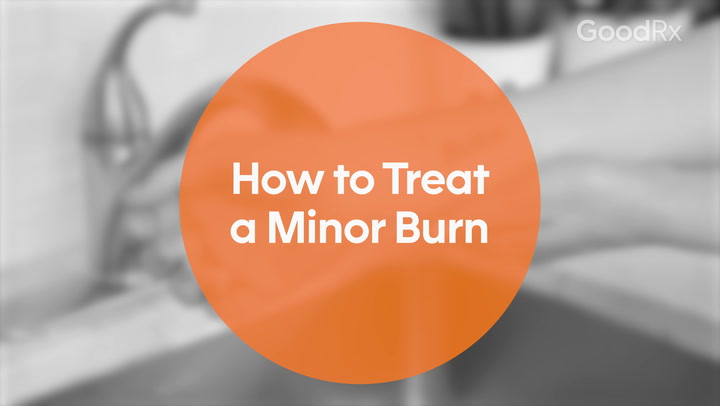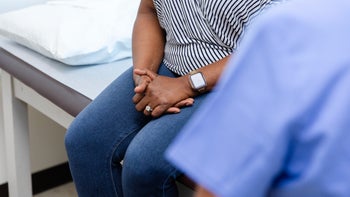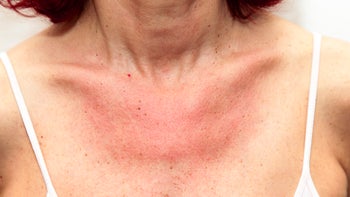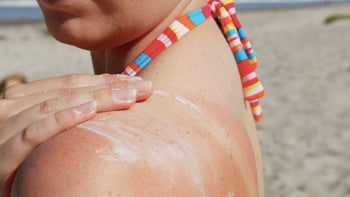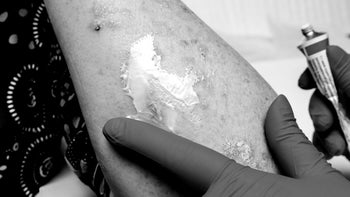
What Poison Ivy, Oak, and Sumac Rashes Look Like in Pictures — and How to Treat Them
Key takeaways:
Poison ivy, poison oak, and poison sumac all contain urushiol, an oil that can cause an itchy, allergic rash.
The rash occurs where the plant touched the skin, and it looks the same for all three: lines or streaks of red, or violet bumps and blisters
You can treat your rash from poison ivy, oak, or sumac with some home remedies and over-the-counter creams. And if that doesn’t work, there are prescription medications that can help speed up recovery and relieve the itch.
Table of contents
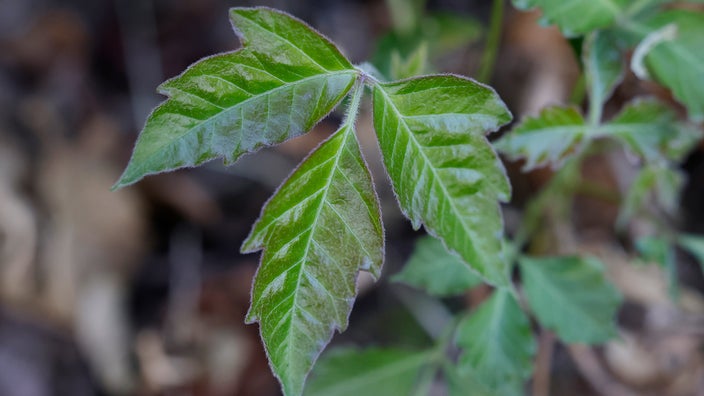
A trip outdoors — hiking, camping, or just gardening — can take a turn if you unknowingly brush up against poison ivy, oak, or sumac. These plants don’t need to be deep in the forest to cause trouble. In fact, they often lurk in plain sight.
Each one contains urushiol, an oily substance that triggers an allergic skin reaction in most people. Just a brief touch is enough to cause a red, itchy rash that may not appear until days later. So, what does poison ivy rash look like — and how can you tell it apart from other irritating rashes?
Here’s how to spot the early signs of a rash from poison ivy, oak, or sumac — with photos to help you identify it. And we’ll also cover how to treat the rash if it shows up.
Search and compare options
What does a poison ivy, poison oak, or poison sumac rash look like?
It’s not always easy to recognize a rash from poison ivy, oak, or sumac. And it’s even harder — because the rash doesn’t show up right away. After contact with one of these plants, it usually takes at least 4 hours for a rash to appear. But in some cases, it can take 2 to 3 days before symptoms develop.
When the rash does show up, it may start as mild redness or itching. Then it can progress to swelling, streaks, or even fluid-filled blisters. The severity often depends on how much urushiol oil you were exposed to and how sensitive your skin is.
Poison ivy rash pictures
So, what does a poison ivy rash look like? Rashes from poison ivy, oak, and sumac all look similar. And whichever plant causes them, the rash can range from mild streaks to widespread blistering rashes.
These photos show some of the most common appearances of a poison ivy rash.
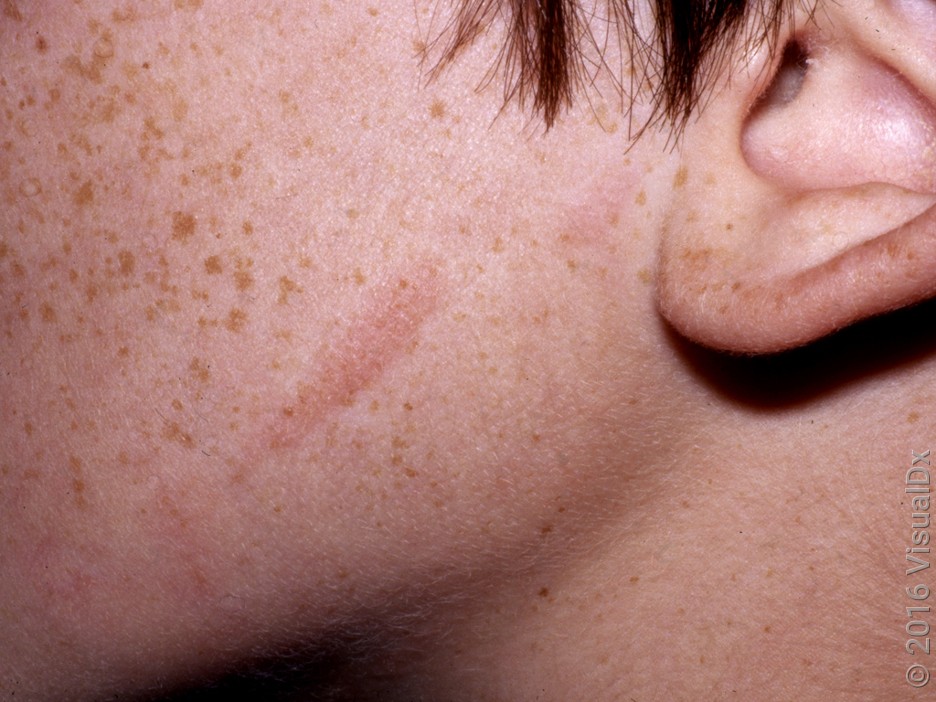
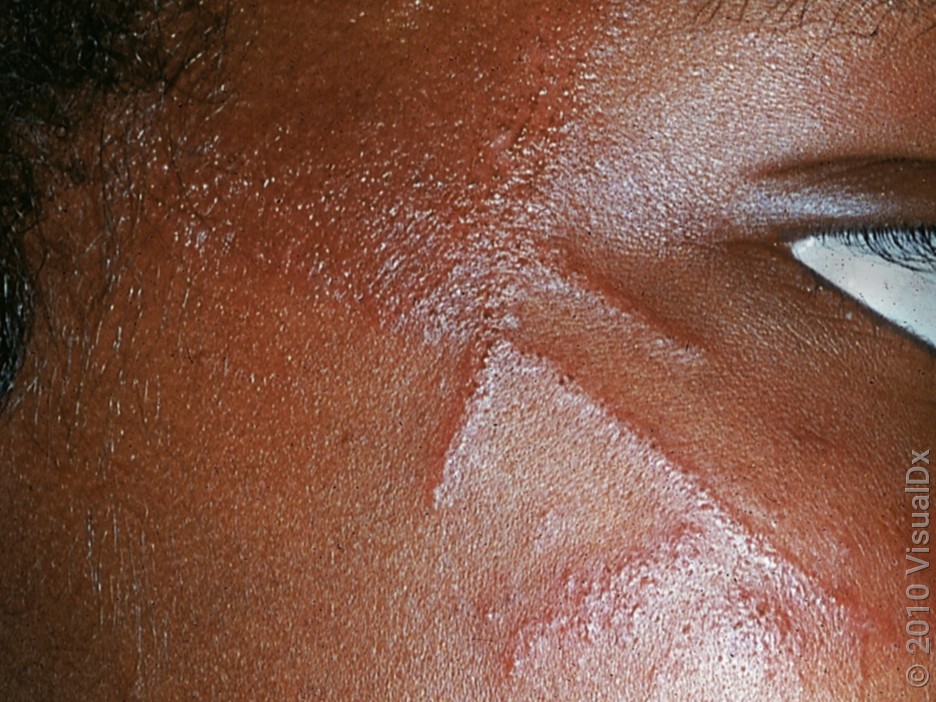
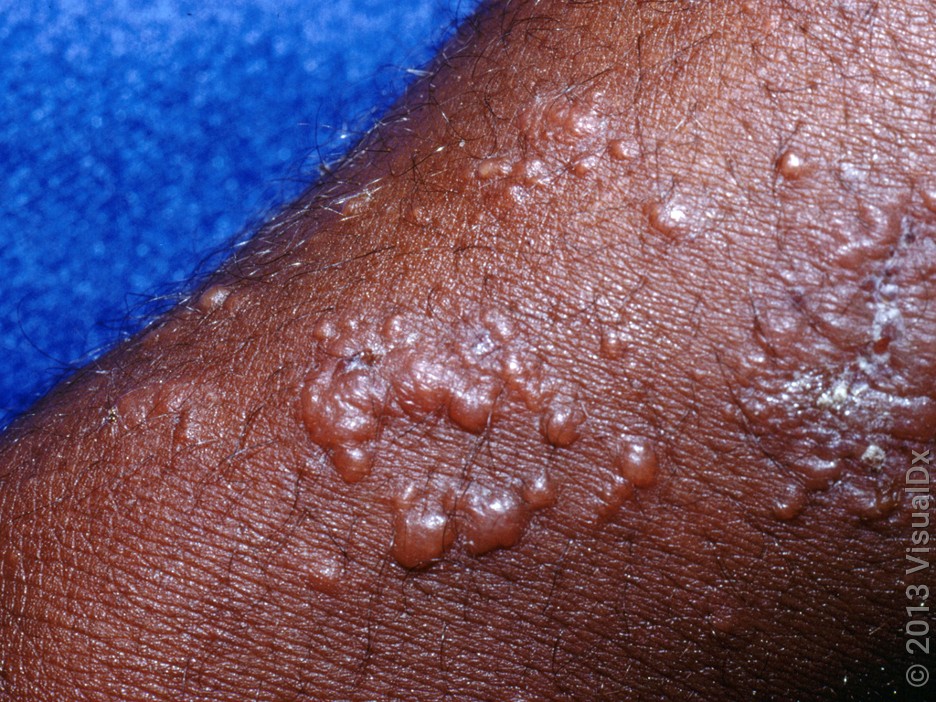
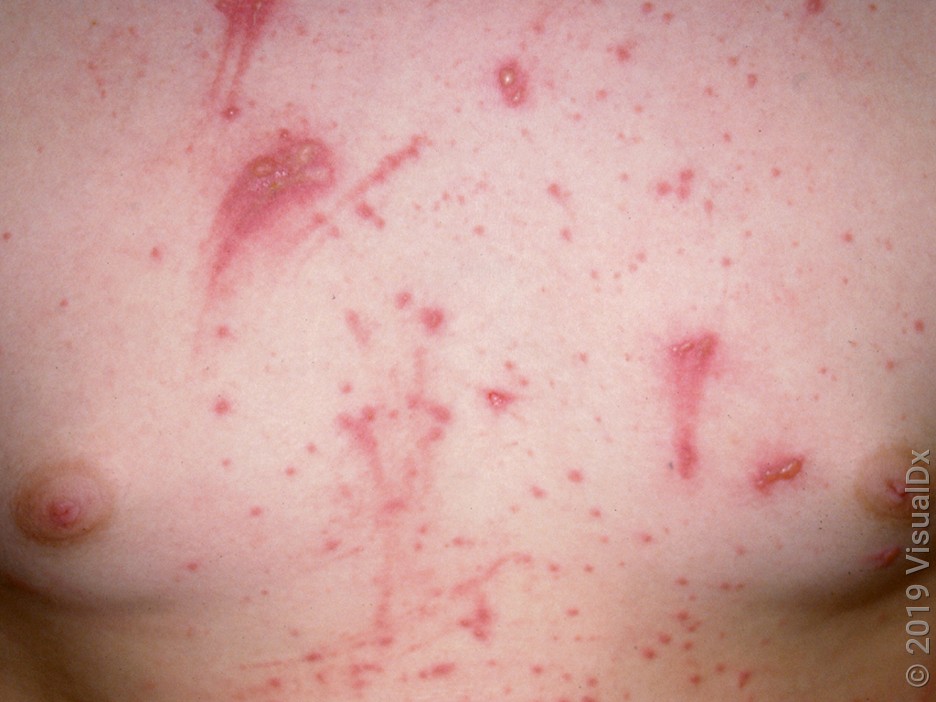
Symptoms and stages of a poison ivy, oak, or sumac rash
A rash from poison ivy, oak, or sumac can be mildly irritating or downright miserable. It depends on how much urushiol your skin was exposed to and how your body reacts. But no matter the plant, the symptoms tend to follow the same pattern.
Stage 1: Itching begins
Before you see anything, you’ll likely feel it. Intense itching is often the first sign and can start hours before the rash appears.
Stage 2: Rash takes shape
Raised bumps or blisters filled with clear fluid begin to form. These are typically red, violet, or brown, depending on your skin tone.
The rash often shows up in streaks or lines. It marks the path where the plant brushed your skin, commonly on exposed areas like arms and legs.
In some cases, tiny black dots may appear. These come from urushiol reacting with oxygen on the skin's surface.
Stage 3: Crusting and healing
As the rash begins to dry out, blisters may ooze, scab over, and form a crust. This is a sign it’s starting to heal, though itching may still linger.
Itching like crazy? From calamine to oatmeal baths, here are the fastest ways to soothe poison ivy — and feel human again.
How long does poison ivy last? Still seeing new bumps? Here's what each stage of a poison ivy rash looks like — and how long it really takes to go away.
Is it poison ivy? Maybe not. Discover other common itchy skin rashes (with photos) and how to tell the difference.
How poison ivy, oak, or sumac spreads
You don’t have to touch the plant itself to get the rash. The urushiol oil that causes the rash is found on every part of the plant, even dead branches. And it sticks to clothes, pet fur, and everyday objects, so it can be transferred from any of those surfaces to your body.
That means you can get a rash:
From indirect contact (like brushing against contaminated clothing or gear)
After touching a pet that rolled in the plants
If urushiol remains on your skin and spreads to others
Read more like this
Explore these related articles, suggested for readers like you.
So, the rash isn’t contagious. But urushiol oil spreads so easily. And that makes it seem like you can “catch” the rash from someone else (even though that’s not exactly what’s going on).
How can you prevent exposure to poison ivy, oak, or sumac?
There are measures you can take to decrease your risk of exposure to poison ivy, oak, or sumac:
Know these plants. Learn to recognize what each of these plants looks like and where it’s commonly found.
Keep your skin covered. Wear long sleeves, long pants, boots, and even gloves if you think you may be around poison ivy, oak, or sumac.
Clean up. Wash any tools or clothing you think may have come into contact with poison ivy, oak, or sumac. Make sure to use soap and wear dishwashing gloves.
How to recognize poison ivy, oak, and sumac
Knowing what these plants look like can help you avoid them in the first place. As the saying goes, “leaves of three, let it be.” That means all of these plants usually have leaves in groups of three.
Poison ivy
Poison ivy leaves almost always come in groups of three, with the middle leaflet being bigger than the other two. This makes it different from other vines and shrubs. The leaves themselves are shiny and green. White flowers turn to cream-colored berries in the spring and summer, and leaves turn reddish in the fall. The shape of the individual leaflets can vary.
Poison oak
Poison oak also grows in leaf clusters of three but with wider, more rounded edges. The leaves look like oak tree leaves. But they can vary in shape and color throughout the seasons.
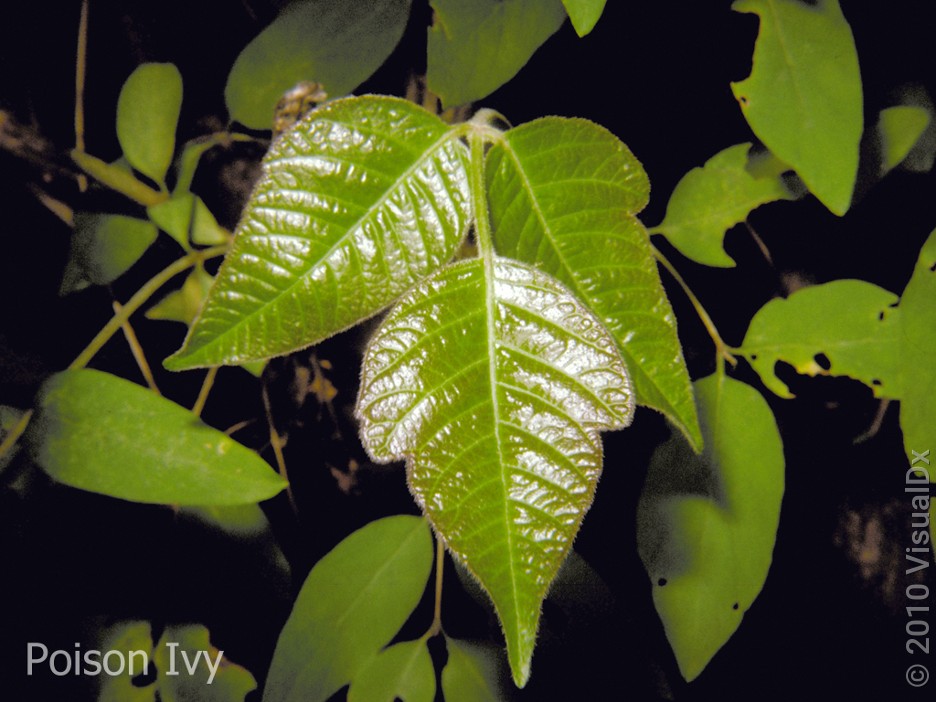

Poison sumac
Poison sumac is a shrub or small tree with 7 to 13 dark green leaves on each reddish stem. The leaves turn a bright orange-red in the fall. Hanging from the branches are light green-yellow flowers that turn into yellow berries.
Treatment for poison ivy, oak, and sumac rash
Even with your best efforts, it’s not always possible to avoid these plants. If you think you’ve been exposed, acting quickly can reduce your chances of developing a rash — or at least make it milder.
What to do right away
Remove and isolate clothing or items that may have touched the plant.
Wash your skin immediately with soap and water. You can use products marketed for poison ivy, but regular soap works just as well.
Clean any contaminated objects, like tools or shoes, using gloves to avoid re-exposure.
Once the urushiol oil is washed off, the rash won’t spread — not to other parts of your body and not to other people. Even fluid from blisters isn’t contagious.
How to treat the rash
The main goal of treatment is to relieve itching and prevent skin infection from scratching.
Most rashes go away on their own within a few weeks. But these at-home and over-the-counter (OTC) treatments can help:
Cool compresses
Hydrocortisone cream (1%) or other topical steroids
Calamine lotion
Baths with baking soda
Oatmeal baths (make your own or buy an OTC colloidal oatmeal product)
Oral antihistamines, like diphenhydramine (Benadryl) and cetirizine (Zyrtec)
You may have heard about home remedies like aloe vera, apple cider vinegar, or banana peels. However, these aren’t supported by strong research. And so they’re unlikely to provide relief.
When to see a healthcare professional
A poison ivy rash should improve in a few weeks, even without treatment. But there are times when you should seek medical care.
See a medical professional if:
The rash is severe, widespread, or on sensitive areas like the face or genitals
You’re not improving with OTC treatments
You may need prescription-strength steroid creams or oral steroids, like prednisone.
You should also seek medical attention right away if you notice a skin infection or breathing problems.
Signs of skin infection
Skin can become vulnerable to bacteria and infection when there are breaks in the skin from blisters or scratching. Signs of a skin infection include:
Fever
Pus
Worsening redness
Pain
Other infection signs are swelling around the rash (concerning for cellulitis), or a yellowish crust over the rash (called impetigo).
Breathing problems
When poison ivy, oak, or sumac are burned, they release urushiol oil in the smoke. This can trigger serious allergic reactions in the lungs and difficulty breathing.
If you’re having trouble breathing or had a past severe allergic reaction to poison ivy, call 911 or go to the ER immediately.
Frequently asked questions
No. A poison ivy rash isn’t contagious. Even the fluid within the blisters isn’t contagious. But the oil that causes poison ivy (urushiol) can be spread from person to person. So, if you have urushiol on your skin and you touch someone else, they can develop a poison ivy rash.
No. Sunlight isn’t good for a poison ivy rash. Exposing your rash to the sun can cause a sunburn, which can damage your skin and slow the healing process. It’s best to keep your poison ivy rash out of the sun until it heals.
It can take up to 3 weeks for a poison ivy or oak rash to heal on its own. Some treatments — like steroid creams — can reduce the symptoms and speed up the healing process.
The bottom line
For most people, a rash from poison ivy, oak, or sumac is an itchy nuisance — not a medical emergency. Still, if symptoms flare up, there are plenty of home remedies and OTC options to ease the discomfort. The best treatment, though, is prevention. Knowing how to spot and avoid these plants can help you stay rash free while making the most of your time outdoors.
Why trust our experts?



Images used with permission from VisualDx (www.visualdx.com).
References
American Academy of Dermatology Association. (n.d.). Poison ivy, oak, and sumac: How to treat the rash.
American Academy of Dermatology Association. (n.d.). Poison ivy, oak, and sumac: What does the rash look like?
American Academy of Dermatology Association. (n.d.). Poison ivy, oak, and sumac: When does the rash appear?
Centers for Disease Control and Prevention. (n.d.). Protecting yourself from poisonous plants.
Centers for Disease Control and Prevention. (2024). Poisonous plants and work.
Chastant, L. E., et al. (2018). Black-spot poison ivy, a report of 3 cases with clinicopathologic correlation. JAAD Case Reports.
Evans, B., et al. (2025). Poison ivy, poison oak and similar plant identification. OSU Extension.
North Carolina Extension Gardener Plant Toolbox. (n.d.). Poison ivy: Toxicodendron radicans.
North Carolina Extension Gardener Plant Toolbox. (n.d.). Toxicodendron vernix.
Stibich, A. S., et al. (2000). Cost-effective post-exposure prevention of poison ivy dermatitis. International Journal of Dermatology.
Surjushe, A., et al. (2008). Aloe vera: A short review. Indian Journal of Dermatology.
U.S. Food and Drug Administration. (2021). Outsmarting poison ivy and other poisonous plants.






